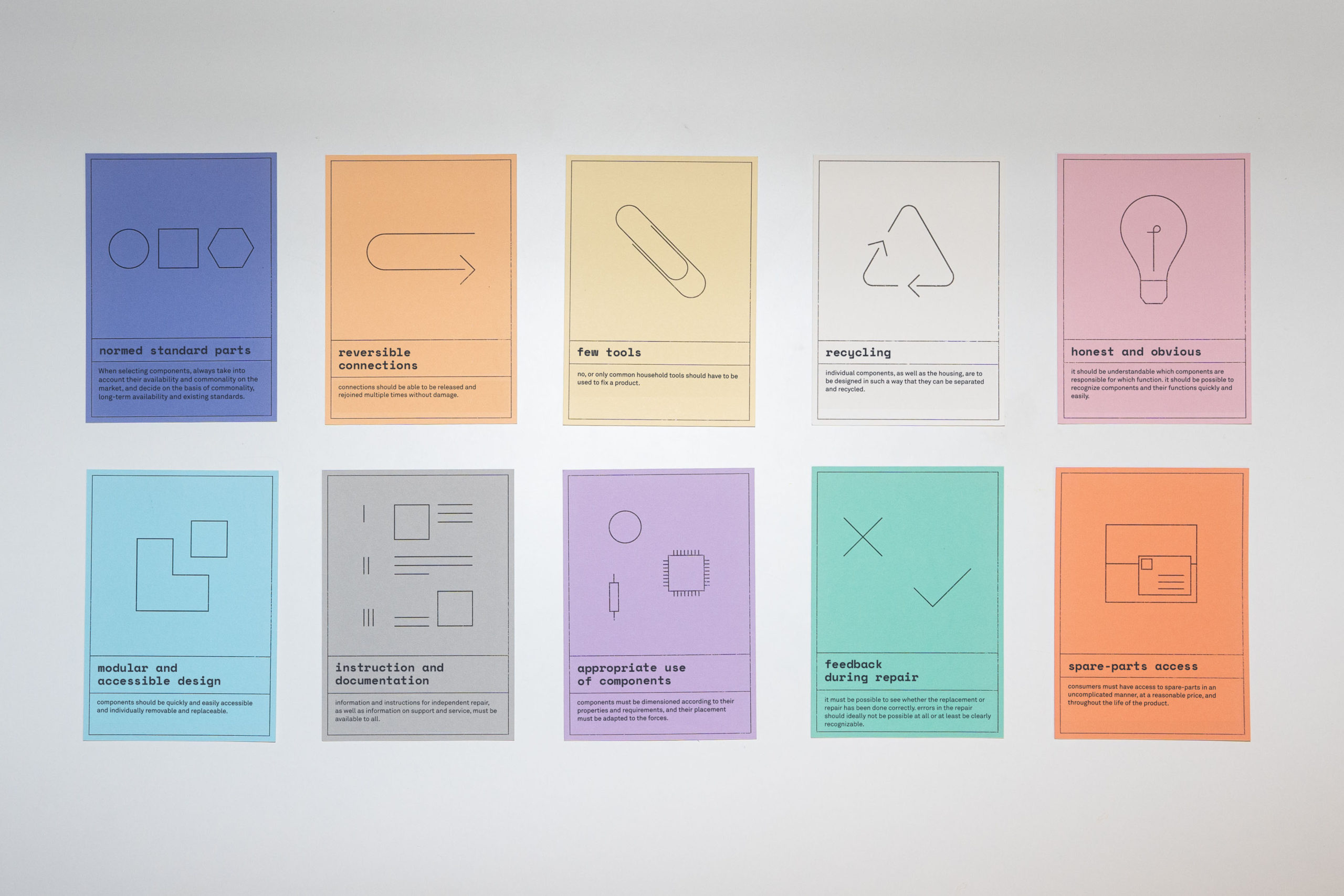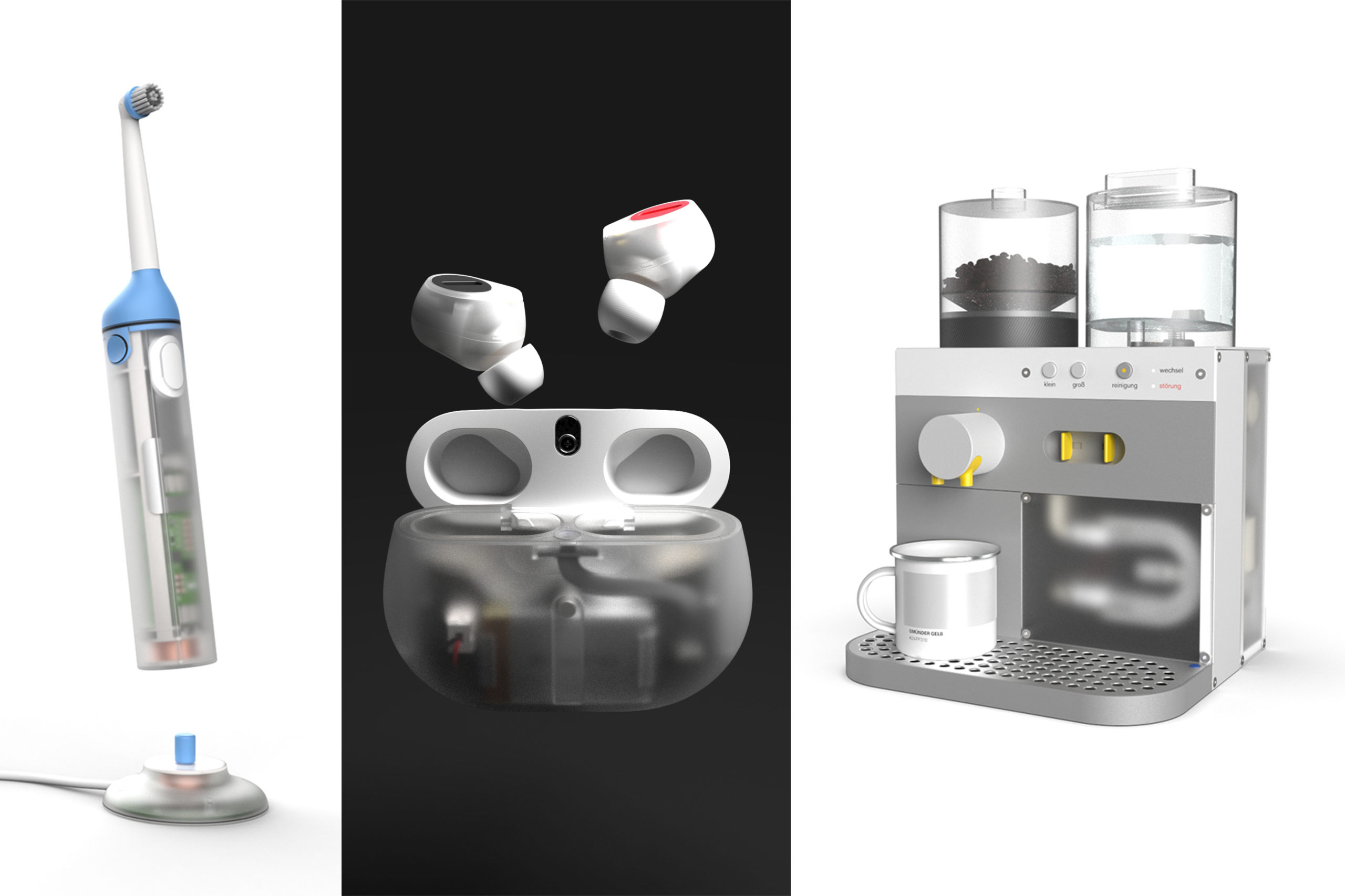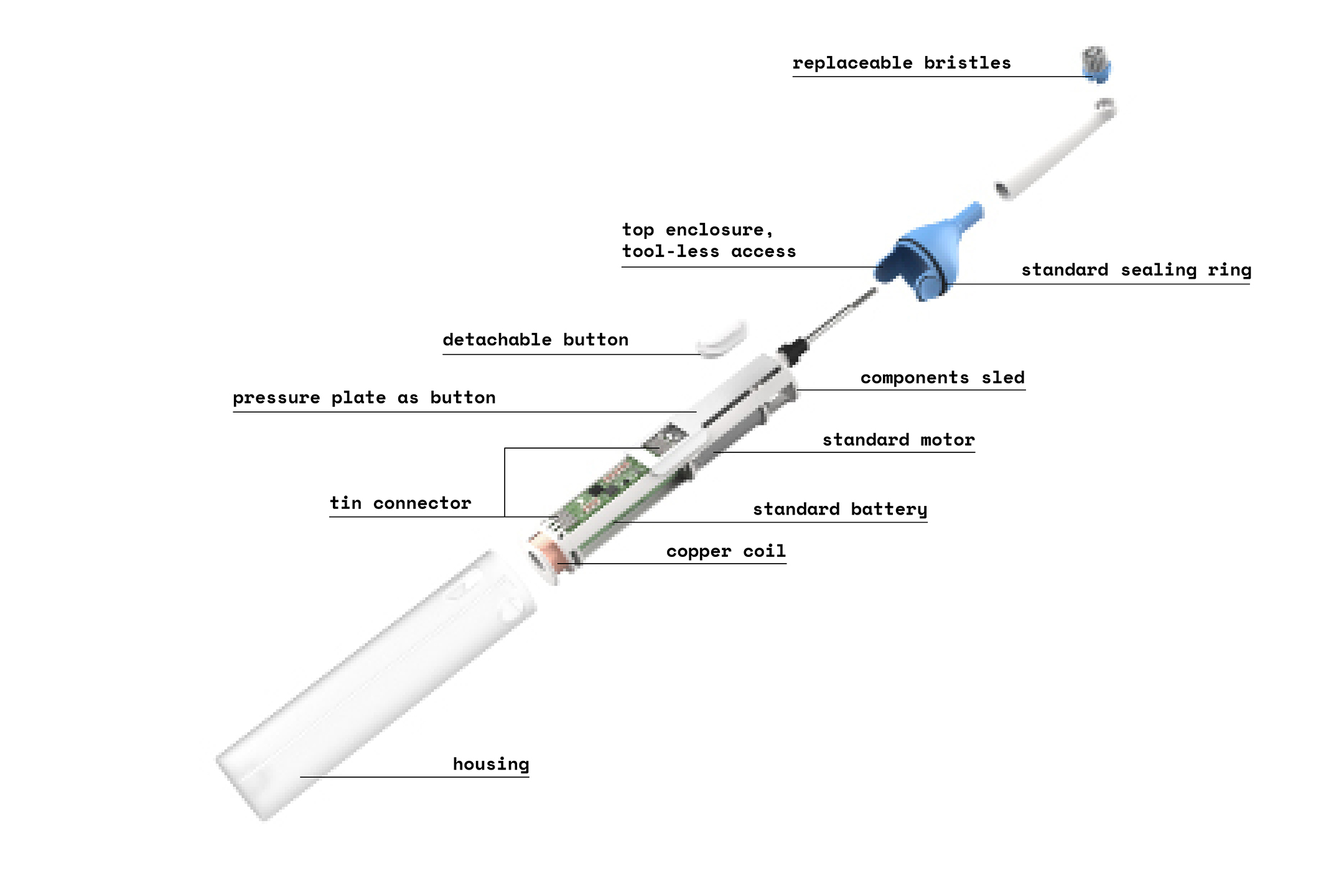repairable by design

Useful information
- Team members
- Vincent Propst David Schöllhorn
- Country
- Germany
- Keywords
- repair ressource efficiency long-lasting social encouragement sustainability guidelines
Short Description
How does repairable design look like? Guidelines explain requirements and show examples of solutions
Detailed Description
“It's not worth it anymore“ is often heard when it comes to repairing broken devices. Often, components are not accessible at all and spares are hard to get, making repairs impossible or too expensive. Devices of the last decades have been designed to be sold, not repaired. From this ongoing worsening of repairability, the demand for a right to repair has evolved.
We focused on creating open and easy access of repairability for everyone. As a result, ten guidelines for repairable product design have been developed. Based on a best-practice scenario, three exemplary products show different approaches and possible solutions for user-friendly repairability. The work is intended to encourage an alternative approach to product values and to show how energy and resource efficiency can be thought consistently from the very beginning. With specific design elements, the users get encouraged to disassemble the products, to look inside in order to understand how things work.
Project Details
- Does your design take social and cultural challenges and human wellbeing into consideration?
Over the last decades, the knowledge of how to repair things has fallen into oblivion. Many young people either do not have the awareness of the need to repair or do not have the skills to do it. The goal is to pass on the knowledge and skills from the old to the new generations through self-repair. At the same time, older generations learn about new aspects, such as digitalization, through contact with the younger generation.
- Does your design support sustainable production, embodying circular or regenerative design practices?
The guidelines take into account that no product lasts forever and highlight the relevance of monomaterials and recyclability. Monomaterials assure best recyclability, changing only what’s broken and using standard parts uses least ressources necessary. These specifications are applied to the example products.
- Does your design use principles of distribution and open source?
The use of standard components enables broad and local availability of spare parts. Through openly accessible instructions and documents, anyone can repair on their own or with the help of the community. Simple parts can be replicated decentralized through 3D printing.
- Does your design promote awareness of responsible design and consumption?
In its core! That’s all it is about. Our goal is to increase the appreciation of energy and resources. It should show a very practical alternative to the prevailing consumerism and the current throwaway society. Everybody should question current consumption patterns and product characteristics in order to collectively pressure companies.
Images


